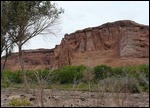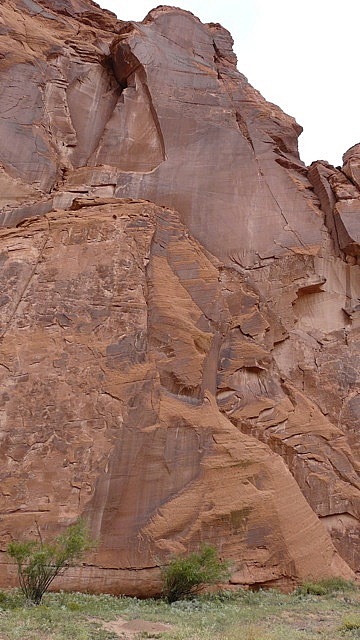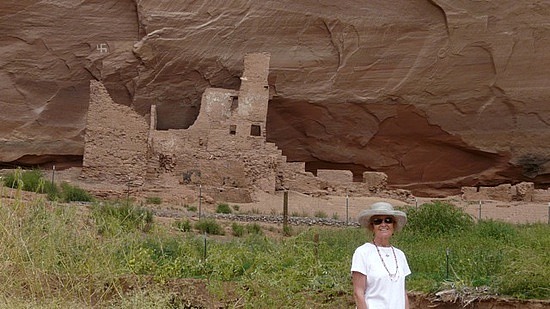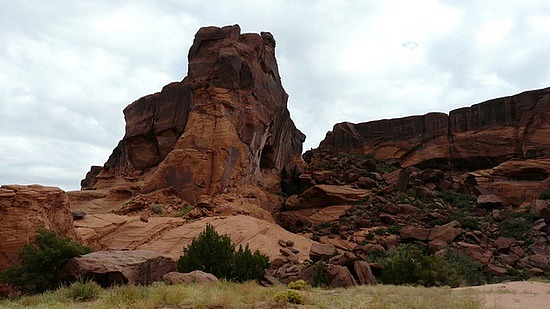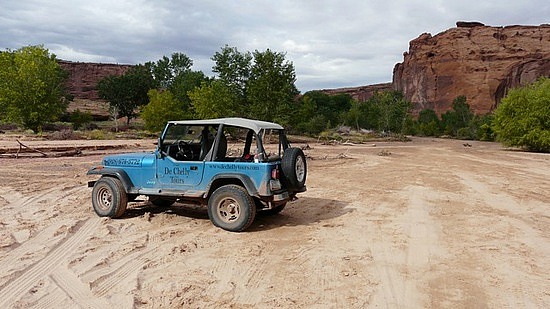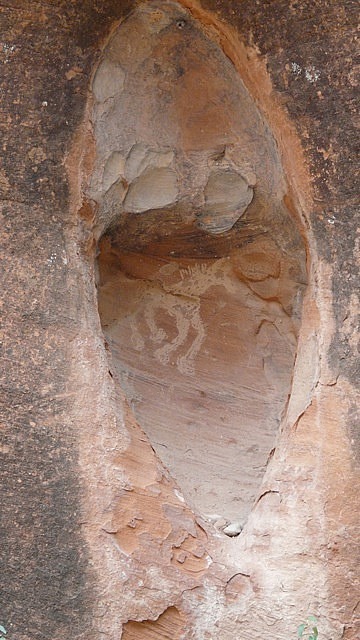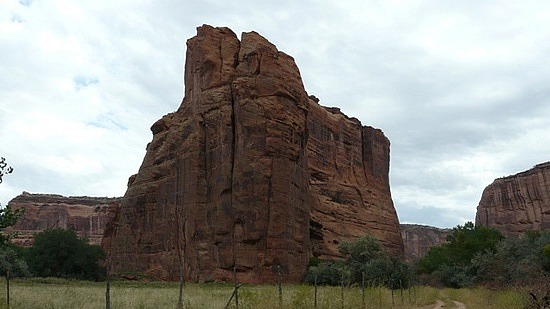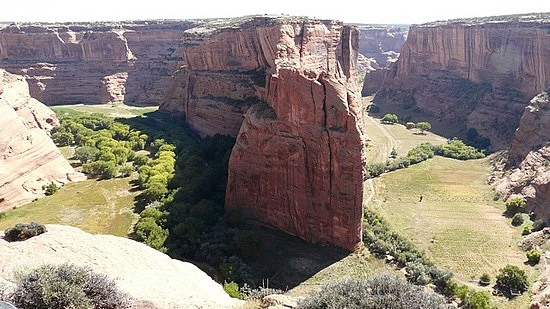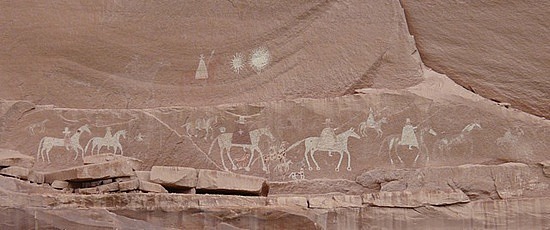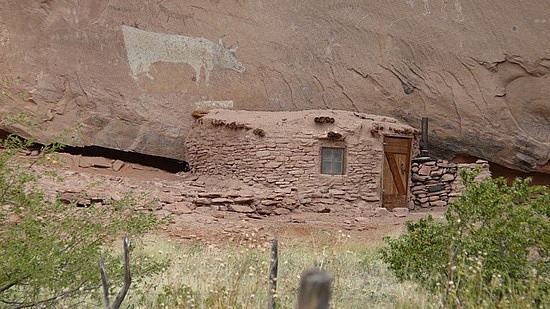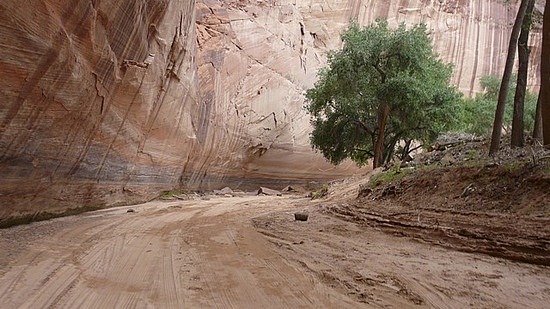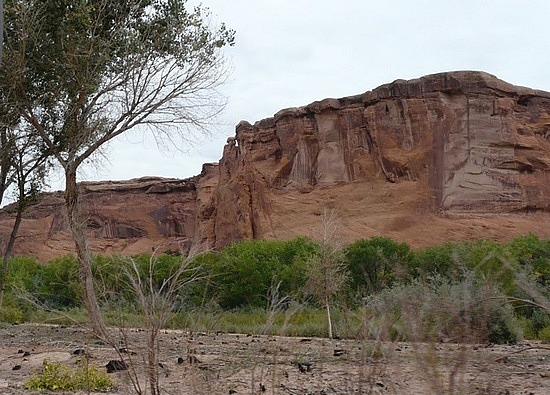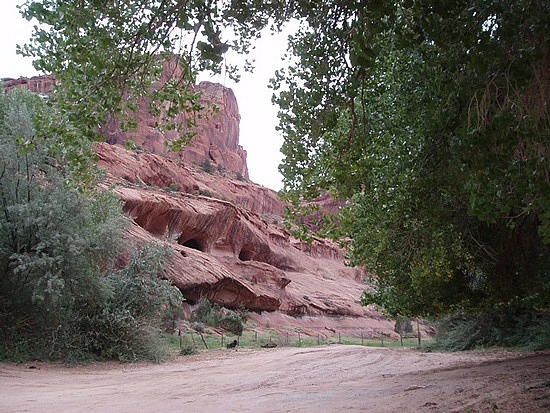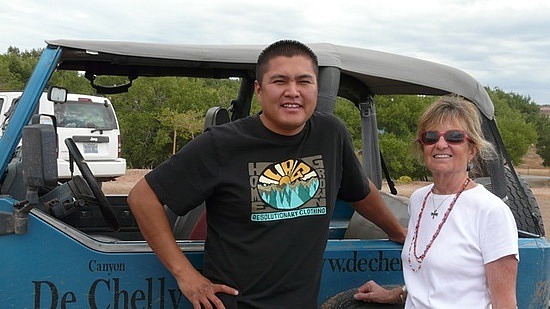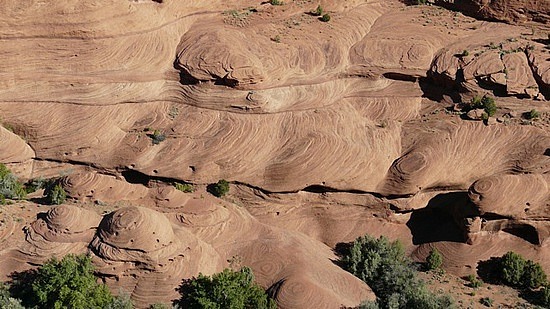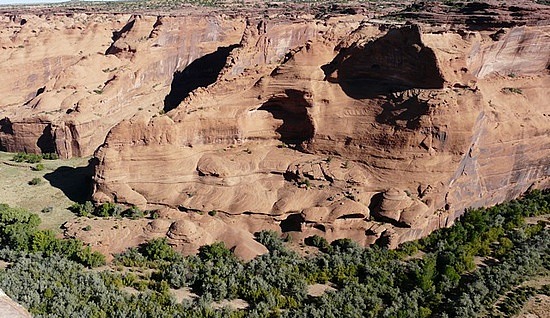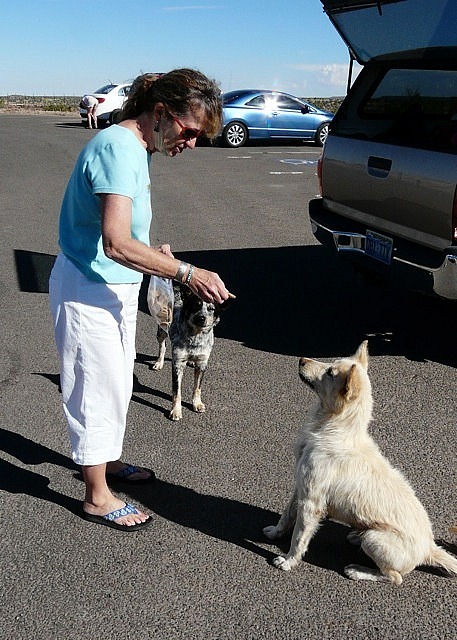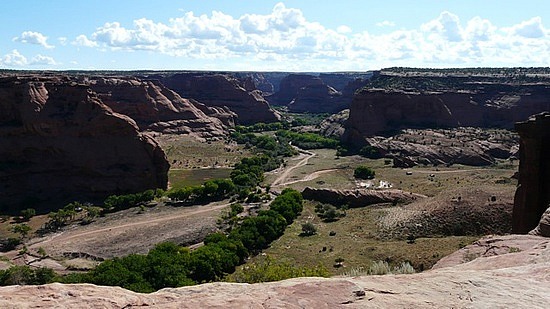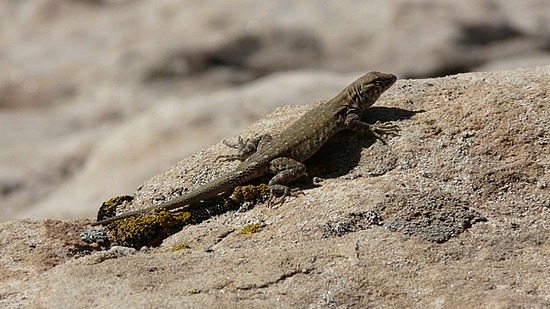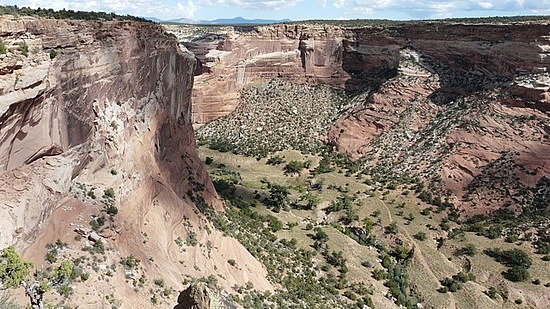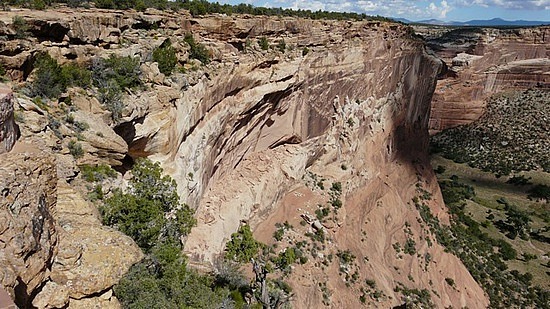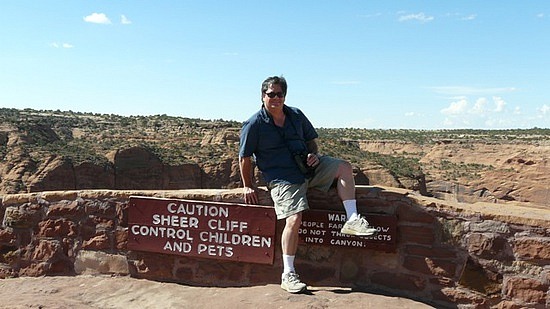What is called Canyon de Chelly is actually several connected canyons including Canyon de Chelly and Canyon del Muerto. Comprised of nearly 84,000 acres, it is owned by the Navajo but is a National Monument and the park service helps with the administration, restoration, and visitors. Thank you, Marion, for telling us about it. It is a very beautiful and spiritual place.
At the mouth of the canyon, near Chinle, the rock walls are only about 30 feet high. As you go further into the canyons, the walls become 1,000 feet high. The only way you can go into the canyons (with the exception of one trail to a specific spot) is either if you are a Navajo or if you are with a Navajo guide. Based on research I did on TripAdvisor and Navajo sites, we reserved a tour with Leander Staley. His ancestors grew up in Canyon de Chelly, a 45 minute drive into the canyon, and his family continues to have land there. (Land on the reservation is owned by the tribe and leased to individuals. Leases are for 65 years and may be renewed for $65. Leases are traditionally passed on from the mother to the youngest daughter but in modern times they are more likely passed on to the child who is interested in staying and farming the land. In Leander's family, he and his two siblings all want the land.) Leander's family farms their canyon land with crops and sheep. Sheep are brought out of the canyon in the cold winter months. A few families live in the canyon year-round. Water is available during the summer monsoon season and after other rains, when the water holes and the washes fill up. The water table is high, so in dry months one may only have to dig five feet down to find water. Some of the farmers have started using pesticides so most water is now hauled in from Chinle. The Navajo were hunters and gatherers and learned farming from the Hopi, who planted and farmed corn, squash, beans, and melons. There are also peach trees, which were planted in the canyon by the Hopi.
Leander's grandfather was a Navajo Code Talker in World War II. His wife's grandfather was one of the original 29 Code Talkers who developed the code. Lee's father started the canyon tour business and many of Lee's relatives work in the business today. Lee's descriptions of the canyon, the history, the culture and traditions of the people were very interesting. We really enjoyed our four-hour tour with him.
The Anasazi lived in Canyon de Chelly from about 700 BC to 1300 AD. There are many ruins still in existence, in very good shape. Buildings were made of local sandstone and clay was used as mortar. Some buildings were on lower ground but most were built in cliff ledges and cutouts high above the ground; this protected them from monsoon floods. Situating the homes in the cliffs also kept them warmer in winter and cooler in summer. The household compounds included living quarters (some for 60-100 people), kivas, and storage buildings. We learned from Leander that the Navajo believe spirits continue to live in the ruins, and the Navajo do not go into them.
There are many pictographs (paintings) and petroglyphs. The petroglyphs were carved by the Anasazi. The pictographs were done by the Anasazi, the Hopi, and the Navajo. Some are in excellent shape. The Hopi lived in the canyons from about 1300-1600 and the Navajo came in around 1700.
Many people are familiar with the story of the Trail of Tears. Not as many know about the Long Walk. It is a long, detailed, and very sad story that is worth knowing about. Canyon de Chelly played a large part in the story. The US government sent Kit Carson and his troops to kill or capture the Navajos. They arrived in the canyon in 1864. The Navajos knew they were coming; they gathered food, water, and other provisions and climbed to the top of what is now called Navajo Fortress Rock. When Kit Carson and his men arrived, the Navajos held them off for six months. The troops couldn't get up the mountain and their rifle range was not that long. The Indians would sneak down the mountain at night to get more water. After six months the dry season arrived and there was no more water. They eventually had to surrender. While the siege was going on, Carson and his men destroyed all of the crops and killed the Navajos' sheep. Kit Carson and his troops herded them first to Fort Defiance near Window Rock, Arizona and then on to Fort Sumner, New Mexico. Many hundreds died on the way. Near Fort Sumner at Bosque Redondo, they, along with other Indians, were given a small plot of land unsuitable for farming and told to farm it. They weren't given housing; they built hogans out of whatever they could find and many tried to find shelter by digging into the earth. They were given rations, such as white flour and coffee, that they didn't know how to use. Water was so alkaline it was undrinkable. Many died from starvation. Others died from diseases. During the four years they were at Bosque Redondo many pioneers and military had been exploring the Navajo land, looking for gold and silver and other ways to become rich from the land. They found nothing worthwhile to them and declared the land useless. The government finally gave up on the internment of the Indians, signed a treaty with them, and let them return to their homelands. Thousands had died but the remaining ones who returned to Canyon de Chelly and that general area resettled and rebuilt. Leander told us that his ancestors told the children to not hold a grudge, that history is behind them and they should look forward. When we stood in front of Navajo Fortress Rock, I could feel its spirituality. To the Navajo it is a spiritual place and no one climbs it.
To the Navajo of today, Canyon de Chelly is a physical and a spiritual home.















